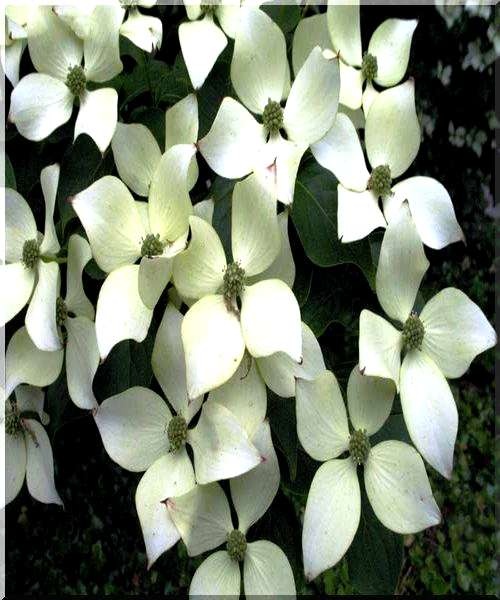
FileUnder the Milky Way.jpg Wikipedia
00:45 Accurately ageing stars reveals the Milky Way's history. To understand when, and how, the Milky Way formed, researchers need to know when its stars were born. This week, a team of.

My first point and shoot Milky Way photos inside the Summer Triangle
Reconstructing the dwarf galaxy is a research task that combines data from star surveys, physics, and Newberg's MilkyWay@Home distributed supercomputer, which harnesses 1.5 petaflops—a measure.

Milky Way MV Event 161113 Hyuk Finder do not edit Leo, Han Sang, Fandom
Fact 1. The Milky Way was born about 12.5 billion years ago and has been growing ever since. Fact 2. According to scientists, about 7 new stars are born in the galaxy every single year. Fact 3. Milky Way is a part of a cluster of galaxies called the Local Group, which comprises about 40 galaxies.

Cornus kousa Milky Way Dereń Kousa Milky Way białe FOTO
Generally speaking, the best time to see the Milky Way is during the Milky Way season, which goes from February to October, usually between 00:00 and 5:00, and on nights with a new moon. This, however, will vary depending on the hemisphere, your latitude, and other factors like the moon phase.

Questions Show Spiral Arms, Seismic Waves on the Sun, and our Favorite
Author: Richard Bartlett Views: 3707 At some point or another, you've probably looked up and noticed a grey, misty band stretching overhead. This mistiness appears irregular, ill-defined, and quite elusive, with bright clumps in some parts and dark patches in others.

Cornus kousa Milky Way Dereń Kousa Milky Way białe FOTO
Milky Way quick facts: - Galaxy type: Barred spiral - Age: 13.6 billion years (and counting) - Size: 100,000 light-years across - Number of stars: about 200 billion - Rotation time: 250 million.

The Outer Rim of the Milky Way Cosmic Pursuits
It takes its name from the Milky Way, the irregular luminous band of stars and gas clouds that stretches across the sky as seen from Earth. Although Earth lies well within the Milky Way Galaxy (sometimes simply called the Galaxy), astronomers do not have as complete an understanding of its nature as they do of some external star systems.

Our Milky Way Healthy Children Project Center for Breastfeeding
The Milky Way's structure is typical of a large spiral system. This structure contains four major structural subdivisions: the nucleus, a central bulge, disk, spiral arms, and a massive halo. Some of these components blend into each other. The nucleus. The galactic nucleus makes up a tiny component of the Galaxy; it extends roughly 400 light.

Milky Way Scented Candle the kurzgesagt shop
3. Vermillion Cliffs National Monument, Arizona. The Vermillion Cliffs National Monument in Northern Arizona is a remote and unspoiled dark-sky treasure. It's the best place to see the Milky Way in Arizona, being at higher altitudes between 3,000-7,000 ft, far away from sources of light pollution, and surrounded by some of the most spectacular geological formations in the world.

Cornus kousa Milky Way Dereń Kousa Milky Way białe FOTO
The Milky Way is the galaxy that includes the Solar System, with the name describing the galaxy's appearance from Earth: a hazy band of light seen in the night sky formed from stars that cannot be individually distinguished by the naked eye.The term Milky Way is a translation of the Latin via lactea, from the Greek γαλαξίας κύκλος (galaxías kýklos), meaning "milky circle".
DEREŃ KOUSA MILKY WAY * DUŻY OKAZ * KWITNĄCY KRZEW 13752160611
Sep 4, 2023 tif (7.18 MB) Like early explorers mapping the continents of our globe, astronomers are busy charting the spiral structure of our galaxy, the Milky Way.

Milky Way Galaxy Over Death Valley Death Valley
Both are correct. Both refer to our home galaxy, our local island in the vast ocean of the universe, composed of hundreds of billions of stars, one of which is our sun. Long ago, it was possible.

CHIMERAS Milky Way Galore!
Milky Way horizontal: Up to 60º, you can see and capture the Milky Way horizontally or as an arch across the sky. Diagonal/Vertical: From 60º up to 90º, the Milky Way will move from a diagonal.

Cornus kousa Milky Way Dereń Kousa Milky Way białe FOTO
Our Sun is located nearly 27,000 light-years from the Milky Way's nucleus, or about halfway between its center and the edge. Our Solar System is placed between two main arms — Scutum-Centaurus and Perseus, within the small partial arm named the Orion Arm or Orion Spur. This arm is about 3,500 light-years wide and more than 20,000 light.

Cornus kousa 'Milky Way' Dereń Kousa 'Milky Way'
Milky Way is an indica dominant hybrid (80% indica/20% sativa) strain of unknown parentage. This bud gets its name from both its sparkly star-like appearance and its taste that is much like a milky way candy bar. This bud has small grape-shaped light minty green nugs with bright orange hairs and a thick frosty coating of glittering white.

Cornus kousa 'Milky Way' Dereń Kousa 'Milky Way' Milky Way, Plants
The Milky Way. Our galaxy, the Milky Way, is typical: it has hundreds of billions of stars, enough gas and dust to make billions more stars, and at least ten times as much dark matter as all the stars and gas put together. And it's all held together by gravity. Like more than two-thirds of the known galaxies, the Milky Way has a spiral shape.